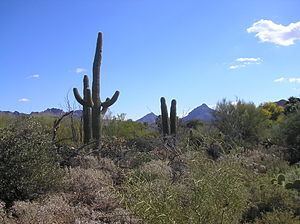272 10 Date 30 March 1862 Location New Mexico Territory | 1 wounded none | |
 | ||
Combatants United States of America, Confederate States of America Similar American Civil War, Battle of Picacho Pass, Capture of Tucson, First Battle of Dragoon Springs, Siege of Tubac | ||
Battle of stanwix station
Stanwix Station, in western Arizona, was a stop on the Butterfield Overland Mail Stagecoach line built in the later 1850s near the Gila River about 80 miles (130 km) east of Yuma, Arizona. Originally the station was called Flap Jack Ranch later Grinnell's Ranch or Grinnell's Station. In 1862, Grinnell's was listed on the itinerary of the California Column in the same place as Stanwix Ranch or Stanwix Station which became the site of the westernmost skirmish of the American Civil War. A traveler in 1864, John Ross Browne, said Grinnell's was six miles southwest of the hot springs of Agua Caliente, Arizona.
Contents
Skirmish at Stanwix Station
The westernmost skirmish of the American Civil War, which occurred at Stanwix Station, took place on March 29, 1862, when Capt. William P. Calloway and a vanguard of 272 troops from the California Column discovered a small detachment of Confederates led by 2nd Lt. John W. Swilling burning hay, which had been placed at Stanwix Station for the California Column's animals. After a brief exchange of gun fire with the much larger Union force, the Confederates retreated to Tucson, the capital of the western district of the Confederate Territory of Arizona. The skirmish resulted in the wounding of a German-born Union private, William Frank Semmelrogge (Semmilrogge), who subsequently recovered. There appear to have been no other casualties.
The significance of the incident was twofold. First, the burning of hay, not only at Stanwix but at five other former stagecoach stations along the Gila River east of Fort Yuma, delayed the California Column's advance to Tucson and Mesilla, the territorial capital of Confederate Arizona. Before the Confederates evacuated Tucson, they also removed or destroyed the supplies gathered for the Union advance by Ammi S. White at the Maricopa Villages. Secondly, and of more immediate importance, Swilling was able to reach Tucson and warn Capt. Sherod Hunter, district military commander of western Confederate Arizona, of the approaching California Column. This led Hunter to place pickets at strategic locations, leading to the Battle of Picacho Pass, where ten Confederate pickets were attacked by a Union cavalry detachment of about twelve. This "battle" was also only a skirmish, distinguished from the Stanwix Station fight simply by the comparatively more severe casualties; three dead and three wounded Union soldiers, and three Confederates taken prisoner.
Stanwix Station (SPRR)
The stagecoach lines were abandoned in the 1880s when the Southern Pacific Railroad completed laying track to Tucson from Yuma. The SPRR built a station just to the east of the Maricopa County line on Stanwix Flats and called it Stanwix Station.
